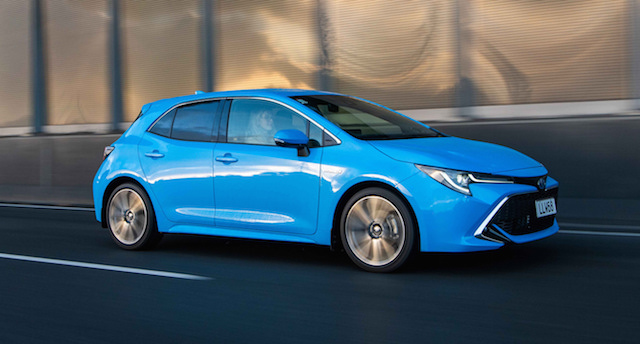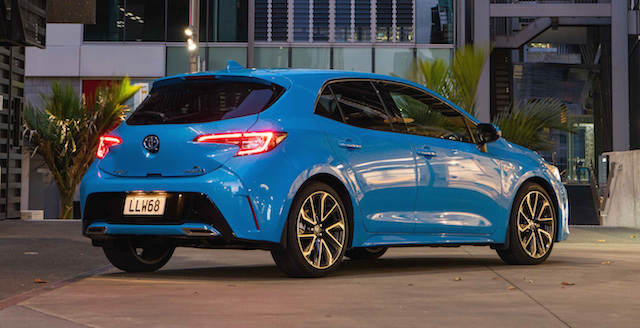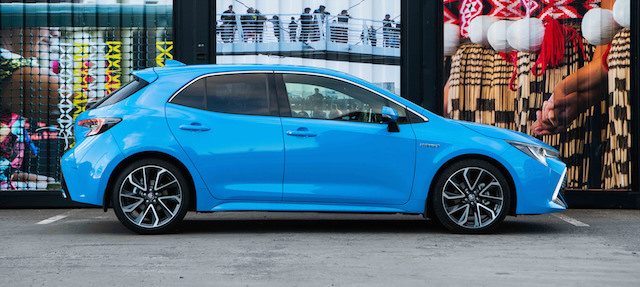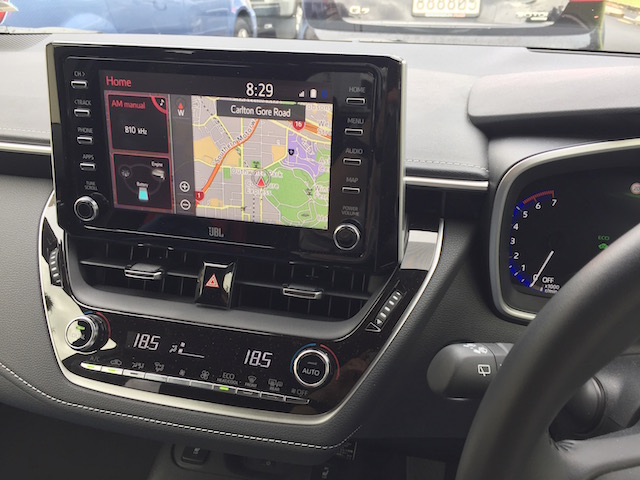
The new Toyota Corolla didn’t make the cut in mainstream 2018 car of the year awards in New Zealand, mainly because it arrived late in the year and didn’t meet judging deadlines.
But I spent enough time behind the wheel of both the 2.0-litre petrol and 1.8-litre petrol-electric Corollas to choose the ZR Hybrid Corolla as my 2018 Car of the Year (COTY). But more on the ZR Hybrid itself down the page.
Petrol or hybrid, the twelfth-generation five-door hatchback is the best value-for-money Corolla Toyota has produced – its impressive bundle of safety equipment alone puts it in a category far beyond its role as a volume seller.
It looks sharper than ever, with design cues taken from the crossover CH-R and Lexus style book. The bodyshell is stronger, with improved rigidity, a strength noted by crash testers the Australian New Car Assessment Programme (ANCAP).
Its modular family chassis is what Toyota CEO Akio Toyoda asked his engineers to produce: one with a lower centre of gravity that gives the new generation of front-drive Toyotas – including the bigger Camry – some sporty bite.
ANCAP liked everything about the Corolla’s structural integrity. It gave it 96 per cent for adult protection, part of a five-star safety finding that made its way into the inaugural AA/Driven COTY awards, where the new Corolla won New Zealand’s safest car category for 2018. The gong applies to both petrol and hybrid models.
The ZR Hybrid Corolla is the best example so far of hybrid automotive fusion at a real-world price: a chassis that delivers an impressive ride/handling mix along with a petrol-electric powertrain that delivers real-world fuel savings.
- There are two Corolla hybrids: the GX at $32,990 and the better equipped ZR at $38,490. Greener petrol-electric technology doesn’t come any cheaper. Both hybrid Corollas are powered by the Prius powerplant, a 72kW/142Nm 1.8-litre Atkinson-cycle four-cylinder petrol engine paired with two electric motor-generators putting out 53kW/163Nm. The CVT (Continuously Variable Transmission) gearbox has three driving modes: Eco, Power and EV. Eco is what 70-year-old buggers like me often use; Power provides a more urgent throttle response; EV is battery power alone, enough for journeys between traffic lights.
- Such an extensive safety package doesn’t come any cheaper either. Corolla offers three grades of autonomous emergency braking, which can detect, mitigate or avoid crashes with vehicles, pedestrians, cyclists. Other gizmos include speed assistance systems, which can read road signs. These are the building blocks for automation, all in a car that, as well as being a popular private model, makes up the bulk of the lease and rental fleet in New Zealand.
- Inside, the Hybrid ZR has an eight-inch multi-media display above the centre console. There you will find the car’s nerve centre. Stuck in traffic and want to send a text by voice command? Tell Apple’s Siri or Google Assistant to send it for you.
- In terms of the ride/handling mix, it is impressive, the best Corolla yet. Turn-in is sharp, the rear end dutifully following the direction the front wheels take. Okay, the platform might not have the edgy responses of a $60,000 performance hatchback, but it’s pretty damn good, its stabiliser bars at each end helping keeping Corolla flatter than ever before through corners. Joining the stabilisers, or anti-sway bars, are MacPherson struts up front and an independent wishbone set-up at the rear.
- Over a couple of weeks of motoring I averaged 4.7 litres/100km – that’s 60 miles to the gallon from a 43-litre (9.4 gallon) fuel tank, or CO2 exhaust emissions of 97 grams/km. In theory, 900km of motoring between fill-ups from the 91-octane bowser. The previous Corolla Hybrid had to drink more expensive 95-octane.
Downsides? Just a couple. The ZR Hybrid Corolla’s back seat is short on knee room and the boot is short on space. Toyota’s dealers admit as much but in the same breath say: how often do you see four people in a Corolla? There’s no spare tyre either, just an aerosol-based repair kit.
This car does lots of things well, while its electrics save on fuel. Electrification, either as a primary or supplementary form of propulsion, is the future. Every carmaker is at it. They are reminded every day that the world’s second biggest oil company, America’s ExxonMobil, spends $NZ150 million a month just looking for oil.



